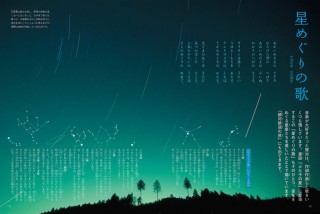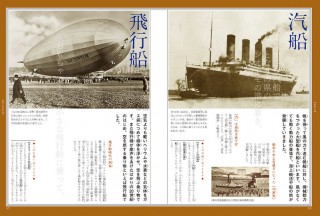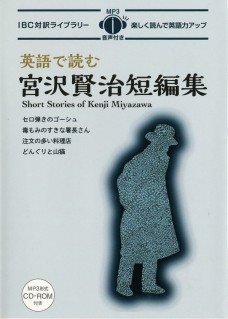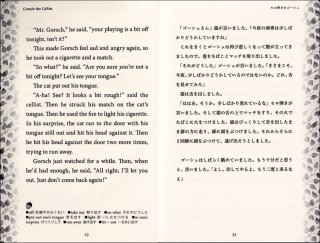▼ Reviving The Joys of Reading Kenji
- Category:Experience
Books commemorating the 120th anniversary of the birth of poet and children’s book author Kenji Miyazawa (1896-1933) are being published in droves.
Miyazawa, commonly referred to by his first name, Kenji, is known for his compelling tales and poetry written in powerful language that gleams with an inner light. The “Night on the Galactic Railroad” is one of his most popular pieces.
Iwasaki Publishing, a well-known publisher of children’s books, compiled “Miyazawa Kenji Dowa Zenshu” (Kenji Miyazawa’s complete children’s stories) in September. The collection of 12 volumes features such stories as “The Wildcat and the Acorns,” “The Nighthawk Star” and others that are considered suitable for children.
Miyazawa, commonly referred to by his first name, Kenji, is known for his compelling tales and poetry written in powerful language that gleams with an inner light. The “Night on the Galactic Railroad” is one of his most popular pieces.
Iwasaki Publishing, a well-known publisher of children’s books, compiled “Miyazawa Kenji Dowa Zenshu” (Kenji Miyazawa’s complete children’s stories) in September. The collection of 12 volumes features such stories as “The Wildcat and the Acorns,” “The Nighthawk Star” and others that are considered suitable for children.
Kenji’s younger brother, Seiroku Miyazawa, initially led a team to edit the author’s original works to make them suitable for contemporary children. They replaced kanji characters with hiragana script and added punctuation marks when first publishing them in 1978-1979. The works have since been best sellers.
In the latest edition, Iwasaki Publishing made further improvements such as enlarging the font size to make the work even more appealing.
The publishing house also released an encyclopedia on Kenji’s work, titled “Kenji Dowa Visual Jiten” (A visual encyclopedia of Kenji’s children stories), under the editorial supervision of Aya Nakachi. Nakachi, a professor at Miyagi University of Education, is a specialist on Kenji.
In the latest edition, Iwasaki Publishing made further improvements such as enlarging the font size to make the work even more appealing.
The publishing house also released an encyclopedia on Kenji’s work, titled “Kenji Dowa Visual Jiten” (A visual encyclopedia of Kenji’s children stories), under the editorial supervision of Aya Nakachi. Nakachi, a professor at Miyagi University of Education, is a specialist on Kenji.
The encyclopedia offers explanations with the help of colorful photographs on words such as “gento” (projector) and “rakko no uwagi” (sea otter fur jacket) that appear in his children’s tales but confuse readers today because they are no longer common.
Yuki Matsuoka, director and editor in chief of the publisher, explained they chose to reproduce his works now to offer children the opportunity to appreciate them from a different perspective.
“Kenji’s works are often presented in picture book form,” Matsuoka said. “We wanted children to read the works in written words, individually visualizing the scenes through their imagination. I hope the encyclopedia will help them in that respect.”
Yuki Matsuoka, director and editor in chief of the publisher, explained they chose to reproduce his works now to offer children the opportunity to appreciate them from a different perspective.
“Kenji’s works are often presented in picture book form,” Matsuoka said. “We wanted children to read the works in written words, individually visualizing the scenes through their imagination. I hope the encyclopedia will help them in that respect.”
Chikuma Shobo, publisher of “Shin-kohon Miyazawa Kenji Zenshu,” which incorporates Kenji’s revisions to present definitive versions of his text, is set to release a 10-volume series starting next month. The series, titled “Miyazawa Kenji Collection,” will cover a total of 101 works from Kenji’s tales for children, children’s novels and short stories as well as more than 500 poems.
A universal touch
A universal touch
IBC Publishing’s “Short Stories of Kenji Miyazawa” offers a different approach to understanding Kenji’s works. The book, which includes stories such as “Gorsch the Cellist” and “The Restaurant of Many Orders,” is presented in English and Japanese on facing pages.
A spokesperson for the publisher’s editorial department explained that reading an English translation of a story one is already familiar with can be an effective way to get used to the English language.
The spokesperson pointed out that Kenji’s stories have a universal touch that makes them easy to translate. For instance, the cellist’s name, Gorsch, could come from any part of the world.
“Shinso-ban: Saito Takashi no Ikkini yomeru! Shogakusei no tameno Miyazawa Kenji” (Takashi Saito’s ‘Read it in one take!’ Kenji Miyazawa for elementary school students) published by Kodansha, suggests a very different way to enjoy Kenji’s work — by reading the pieces aloud.
“Matasaburo of the Wind” is that kind of story. Children can read what the howling wind must have sounded like to Kenji’s ears. In the book, Saito chose a total of 11 stories so the children could improve their skills in reading as well as imagining scenes.
For those who want to know what kind of man Kenji was, “Kenji Miyazawa, Atsushi Nakajima,” the 16th volume in the “Ikezawa Natsuki: Kojin Henshu Nihon Bungaku Zenshu” (A personal selection of Japanese literature) compiled by Natsuki Ikezawa, is recommended. Ikezawa, also a writer, showed his particular taste in his selection of Kenji’s works, published by Kawade Shobo. His analysis of Kenji, a man whose energy surfaced in his thoughts and words, is particularly worth reading.
A spokesperson for the publisher’s editorial department explained that reading an English translation of a story one is already familiar with can be an effective way to get used to the English language.
The spokesperson pointed out that Kenji’s stories have a universal touch that makes them easy to translate. For instance, the cellist’s name, Gorsch, could come from any part of the world.
“Shinso-ban: Saito Takashi no Ikkini yomeru! Shogakusei no tameno Miyazawa Kenji” (Takashi Saito’s ‘Read it in one take!’ Kenji Miyazawa for elementary school students) published by Kodansha, suggests a very different way to enjoy Kenji’s work — by reading the pieces aloud.
“Matasaburo of the Wind” is that kind of story. Children can read what the howling wind must have sounded like to Kenji’s ears. In the book, Saito chose a total of 11 stories so the children could improve their skills in reading as well as imagining scenes.
For those who want to know what kind of man Kenji was, “Kenji Miyazawa, Atsushi Nakajima,” the 16th volume in the “Ikezawa Natsuki: Kojin Henshu Nihon Bungaku Zenshu” (A personal selection of Japanese literature) compiled by Natsuki Ikezawa, is recommended. Ikezawa, also a writer, showed his particular taste in his selection of Kenji’s works, published by Kawade Shobo. His analysis of Kenji, a man whose energy surfaced in his thoughts and words, is particularly worth reading.
- December 3, 2016
- Comment (0)
- Trackback(0)





